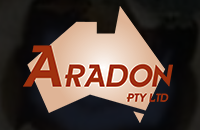- The Southern Cassowary is the third tallest and second heaviest living bird, smaller only than the Ostrich and Emu.
- The name cassowary comes from two Papuan words, ‘kasu’ meaning horned and ‘weri’ meaning head, referring to the prominent casque on its head.
- An adult cassowary can stand up to 1.8 metres (6’) tall.
- Cassowaries are solitary birds except during courtship, egg-laying, and sometimes around ample food supplies.
- The male cassowary is solely responsible for incubating the eggs and raising the young. They sit on the nest for 50 days until the eggs hatch.
- The father teaches the chicks how to forage and by nine months they become independent.
- There are only about 1500 cassowaries left in the wild.
Our Aussie Blog
[Blog Post] Australian Animal Facts - The Cassowary
[Blog Post] Pumpkin Scones Recipe
2 ozs. butter
3/4 cup castor sugar
1/2 cup well mashed, thoroughly drained cooked pumpkin
2 1/2 cups self raising flour
pinch salt
1 egg beaten well
1 teaspoon mixed spice
1/2 cup milk
Method:
Soften butter, beat in the sugar until creamy. Stir in the pumpkin, spice and beaten egg, mixing thoroughly. Sift together flour and salt and mix in. Add the milk, mix to a soft dough and then turn out onto a lightly floured surface. Pat or roll out to 3/4 inch thick, cut into rounds with a 2 inch cutter, flouring it each time you cut. Arrange scones on a lightly greased oven tray, brush tops with milk and bake in a hot oven about 15 minutes or until browned.
[Blog Post] Waltzing Matilda Lyrics by A.B. “Banjo” Paterson
A real favourite and probably our most known song outside of Australia.
WALTZING MATILDA
A.B. “Banjo” Paterson
Oh! There once was a swagman camped in a Billabong
Under the shade of a Coolabah tree;
And he sang as he looked at his old billy boiling,
‘Who’ll come a-waltzing Matilda with me?
Who’ll come a-waltzing Matilda my darling,
Who’ll come a-waltzing Matilda with me?
Waltzing Matilda and leading a water-bag –
Who’ll come a-waltzing Matilda with me?
Down came a jumbuck to drink at the water-hole,
Up jumped the swagman and grabbed him in glee;
And he sang as he stowed him away in his tucker-bag,
‘You’ll come a-waltzing Matilda with me!’
Down came the Squatter a-riding his thoroughbred;
Down came Policemen – one, two, and three.
‘Whose is the jumbuck you’ve got in the tucker-bag?
You’ll come a-waltzing Matilda with me!’
But the swagman, he up and he jumped in the water-hole,
Drowning himself by the Coolabah tree;
And his ghost may be heard as it sings in the Billabong
‘Who’ll come a-waltzing Matilda with me?’
We have Australian made pewter belt buckles depicting a scene from Waltzing Matilda, view them here.
[Blog Post] Interesting Australian Inventions - Early 1900s
The Australians have always been an inventive lot, not only did the Aboriginals invent some amazing things, in more recent history we have created some much needed things to make life easier and more comfortable. Here are more of our marvellous inventions.
1906 – Feature Film
The Story of the Kelly Gang was the world’s first feature length film.
1906 – Kiwi Boot Polish
The boot polish that could restore the faded colour of brown shoes was first available for sale.
1913 – Automatic Totalisator
Invented by George Julius, this was the ‘tote automated betting’ at horse races.
1922 – Rotary Hoe
Cliff Howard, with help from his brother Albert built the first full-size rotary hoe cultivator. It uses energy to turn the soil directly, rather than dragging a plough behind a tractor.
1924 – Car Radio
The first car radio was fitted to an Australian car built by Kellys Motors in New South Wales.
1928 – Royal Flying Doctor Service
Reverend John Flynn was the founder of the world’s first Aerial Medical Service, now known as the Royal Flying Doctor Service (RFDS). In May 1928, Dr St Vincent Welch made the first official RFDS visit.
1928 – First Crossing of the Pacific
Sir Charles Kingsford Smith and his crew performed the world’s first air crossing of the Pacific Ocean.
1928 – Speedo Swimwear
This swimwear originated in Sydney when the MacRae Knitting Mills manufactured the company’s first swimsuit, the razorback, made from silk and joined in the middle of the back. Speedo introduced the world’s first nylon swimsuit in 1957.
1930 – Letter Sorting Machine
Sydney GPO was the site for the first mechanised letter sorter which was developed by an engineer with the Postmaster-General’s Department.
1933 – Utility Vehicle
The ute, with a front like a car and rear like a truck was designed by Lewis Bandt at the Ford Motor Company in Geelong, Victoria.
1945 – Hills Hoist
This rotary clothesline with a winding mechanism allowing the frame to be raised and lowered was invented by Lance Hill of Adelaide in 1945.
1946 – Shepherd Castors
George Shepherd invented strong, easily manoeuvrable dome-shaped castors for furniture. These replaced traditional pivoted wheel castors.
1947 – Cloud Seeding
Scientists at CSIRO conducted the first successful cloud seeding experiments, making rain fall near Bathurst, NSW.
1950s – Distance Measuring Equipment
Every airliner in the world uses a piece of navigation equipment called DME, or Distance Measuring Equipment.
1950 – School of the Air
The first ever radio lesson was broadcast using the transmitter at the Australian Royal Flying Doctor Base at Alice Springs.
1952 – Victa Lawnmower
The Victa version of the petrol lawnmower with rotary blades was developed by Mervyn Victor Richardson, and became an Aussie icon.
[Blog Post] Australian Inventions - Late 1900s
The Australians have always been an inventive lot, not only did the Aboriginals invent some amazing things, in more recent history we have created some much needed things to make life easier and more comfortable. Here are more of our marvellous inventions.
1982 – The dual flush toilet
As dunnies have a celebrated status in Australia, it is apt that Australia has taken a central role in their evolution. In 1982, the dual flush toilet was responsible for savings in excess of 32000 litres of water per household a year. Pretty important in the world’s dries inhabited continent.
1984 – Baby Safety Capsule
Babies in a car crash used to bounce around like a soccer ball. In 1984, for the first time babies had a harness for their safe transportation in cars.
1985 – World’s Most Efficient Solar Cells
Dr Stuart Wenham and Professor Martin Green from the University of New South Wales produced the world’s first 20% efficient solar cell.
1988 – Plastic Banknotes
CSIRO and Note Printing Australia developed the world’s first polymer banknote made from tough flexible polypropylene plastics. These notes last longer and are more difficult to counterfeit than paper money.
1988 – Biological Pesticides
The world’s first non-chemical biological pesticide was invented at the University of Adelaide.
1995 – Jindalee Radar System
The United States of America spent $11 billion developing an aeroplane that could not be detected by radar. Scientists at the CSIRO then concluded that if the plane could not be detected, perhaps the turbulence it makes passing through air could be. $1.5 million later, the Jindalee Radar system had transformed the stealth bomber into nothing more than an unusual looking aircraft.
1998 – Hybrid Toilet
A lightweight, fully–enclosed toilet system which requires no water and minimal maintenance was released for sale.
2000 – Biodegradable Packaging
The Cooperative Research Centre for International Food Manufacture and Packaging Science developed new biodegradable packaging materials based on starch.
[Blog Post] Australian Inventions - Mid 1900s
The Australians have always been an inventive lot, not only did the Aboriginals invent some amazing things, in more recent history we have created some much needed things to make life easier and more comfortable. Here are more of our marvellous inventions.
1952 – Atomic Absorption Spectrophotometer
Sir Alan Walsh of the CSIRO invented this instrument used for high speed chemical analysis of metallic elements.
1953 – Solar Water Heater
The first prototype of a solar water heater was developed at CSIRO in Victoria.
1957 – Permanent Crease Trousers
The process of producing permanent creases in fabric was developed by Dr Arthur Farnworth of CSIRO by adding a special resin to wool fibres to change their chemical structure.
1958 – Black Box Flight Recorder
Dr David Warren in Melbourne invented the first black box flight memory recorder. The unit recorded the pilot’s voice and a few instrument readings.
1958 – Round-the-World Airline Service
Qantas inaugurated a pioneering round-the-world airline service with two aircraft taking off from Melbourne.
1965 – Inflatable Aircraft Escape Slide
Jack Grant of Qantas invented the inflatable aircraft escape slide which can also be used as a raft on water. These slides are now standard safety equipment on all major airlines.
1965 – Wiltshire Staysharp Knife
The Wiltshire Staysharp knife was invented with a sheath which sharpens the knife each time it is withdrawn.
1965 – Wine Cask
Invented by Thomas Angrove, the wine cask is a cardboard box housing a plastic container which collapses as the wine is drawn off, thus preventing contact with air.
1969 – Australia Shows the First Steps on the Moon
The radio telescope in Parkes, New South Wales, received and relayed to the world the first pictures of the first moon landing.
1970 – Variable rack and pinion steering
The variable ratio rack and pinion steering in motor vehicles was invented by Australian engineer, Arthur Bishop.
1973 – Pop Top Can
Sir Ian McLennan of BHP came up with the idea of press-buttons where the button is hinged to the can and does not cause a litter problem.
1973 – In-vitro Fertilisation
The world’s first pregnancy using IVF technology was reported from Monash Medical Centre.
1975 – Interscan
An aircraft approach and landing guidance system using microwaves was successfully tested at Tullamarine Airport, Melbourne.
1976 – Electronic Ignition System
A silicon-chip ignition system for small engines in lawnmowers and chainsaws was developed by the Notarus brothers in Sydney.
1979 – Race Cam
A lightweight, fixed camera used in car racing and other sports broadcasts was developed by Australian engineer, Geoff Healey.
1979 – Cool Lightweight Wool Fabrics
The technique for spinning lightweight wool was invented at CSIRO.
[Blog Post] Aboriginal Art Information
One of our most famous Aboriginal artists would be Albert Namatjira who is best known for his water-colour landscapes of the Macdonnell Ranges and the nearby regions of Central Australia. His painting style was more of a conventional approach to art unlike some of the Aboriginal art we see but his paintings do capture something special in them.
Aboriginal art has existed for many thousands of years. Some of the rock carvings and aboriginal paintings are 30,000 years old. These painting and carvings narrate the stories of the painter or sculptor.
The colours used in ancient Aboriginal art were natural shades of earth colours such as red, brown and yellow. The other colours used were white made from pipe clay and charcoal made by burning wood.
One of the traditional visual art forms of the Aboriginals is known as “Dot painting”. In dot painting, minute dots are used to create symbols and patterns on canvas. Traditional dot painters still use natural pigments derived from plants and seeds but some contemporary artists now use acrylic paints on canvas instead of natural earth colours.
At Australian Native T-Shirts we have quite a selection of Aboriginal art on t-shirts, ladies clothing, prints and wallhangings. Click here to check it out!
[Blog Post] Australian Animal Facts – The Tasmanian Devil
- The Tasmanian Devil stores body fat in its tail and an unhealthy devil often has a thin tail.
- An analysis of mammalian bite force, corrected for body size, shows that the Tasmanian Devil has the strongest bite of any living mammal.
- Because it is a marsupial, a Tasmanian devil gives birth to very immature young which develop further while in the mother’s pouch.
- Tasmanian Devils are mainly scavengers – they mainly feed on the dead bodies of wallabies and sheep, Tasmanian devils will take other smaller animals as prey.
- When angered, the ears of Tasmanian devils turn a pinkish-red.
- The Tasmanian Devil was named for the sound of its scream.
In our store we sell Tasmanian Devil products such as pewter figurines as well as cute Tassie Devil plush toys – click here to view them.
[Blog Post] Click Go The Shears, Boys Lyrics – Aussie Bush Ballad
CLICK GO THE SHEARS, BOYS
Anonymous
Out on the board the old shearer stands,
Grasping his shears in his long, bony hands.
Fixed is his gaze on a bare-bellied “joe”,
Glory if he gets her, won’t he make the ringer go.
Chorus:
Click go the shears, boys, click, click, click,
Wide is his blow and his hands move quick,
The ringer looks around and is beaten by a blow,
And curses the old snagger with the blue-bellied “joe”.
In the middle of the floor in his cane-bottomed chair
Is the boss of the board, with eyes everywhere;
Notes well each fleece as it comes to the screen,
Paying strict attention if it’s taken off clean.
The colonial-experience man, he is there, of course,
With his shiny leggin’s, just got off his horse,
Casting round his eye like a real connoisseur,
Whistling the old tune, “I’m the Perfect Lure”.
Now, Mister Newchum, for to begin,
In number seven paddock bring all the sheep in;
Don’t leave none behind, whatever you may do,
And then you’ll be fit for a jackeroo.
The tar-boy is there, awaiting in demand,
With his blackened tar-pot, and his tarry hand;
Sees one old sheep with a cut upon its back,
Hears what he’s waiting for, “Tar here, Jack.”
Shearing is all over and we’ve all got our cheques,
Roll up you sway for we’re off on the tracks;
The first pub we come to, it’s there we’ll have a spree,
And everyone that comes along it’s, “Come and drink with me!”
Down by the bar the old shearer stands,
Grasping his glass in his thin bony hands,
Fixed in his gaze on a green –painted keg,
Glory, he’ll get down on it, ere he stirs a peg.
There we leave him standing, shouting for all hands,
Whilst all around him every “shouter” stands;
His eyes are on the cask, which is now lowering fast,
He works hard, he drinks hard, and goes to hell at last.
[Blog Post] Funny Aussie Computer Terminology
Log Off…… Don’t add any more wood
Monitor…… Keeping an eye on the barbie
Download…… Get the firewood off the ute
Floppy Disc…… What you get lifting too much firewood at once
Window…… What you shut when it’s cold
Screen…… What you shut in the mozzie season
Byte…… What mozzies do
Bit…… What mozzies did
Mega Byte…… What Townsville mozzies do
Chip…… A bar snack
Micro Chip…… What’s left in the bag after you have eaten the chips
Modem…… What you did to the lawns
Dot Matrix…… Old Dan Matrix’s wife
Laptop…… Where the cat sleeps
Software…… Plastic knives and forks you get at Big Rooster
Hardware…… Real stainless steel knives and forks from K Mart
Mouse…… What eats the grain in the shed
Mainframe…… What holds the shed up
Web…… What spiders make
Web Site…… The shed or under the verandah
Cursor…… The old bloke that swears a lot
Search Engine…… What you do when the ute won’t go
Upgrade…… A steep hill
Server…… The person at the pub that brings out the counter lunch
Mail Server…… The bloke at the pub that brings out the counter lunch
User…… The neighbour who keeps borrowing things
Network…… When you have to repair your fishing net
Internet…… Complicated fish net repair method
Netscape…… When fish manoeuvres out of reach of net
Online…… When you get the laundry hung out
Off Line…… When the pegs don’t hold the washing up

![[Blog Post] Australian Animal Facts - The Cassowary](http://www.australian-native.com.au/cdn/shop/articles/animal-trivia-cassowary_1024x1024.jpg?v=1495779271)
![[Blog Post] Pumpkin Scones Recipe](http://www.australian-native.com.au/cdn/shop/articles/recipe-scones_1024x1024.jpg?v=1495778880)
![[Blog Post] Aboriginal Art Information](http://www.australian-native.com.au/cdn/shop/articles/blog-aboriginal-art_b64d1d3c-fc0d-4674-a324-d9c628722f77_1024x1024.jpg?v=1495778216)
![[Blog Post] Australian Animal Facts – The Tasmanian Devil](http://www.australian-native.com.au/cdn/shop/articles/blog-tasmanian-devil_1024x1024.jpg?v=1495777773)



